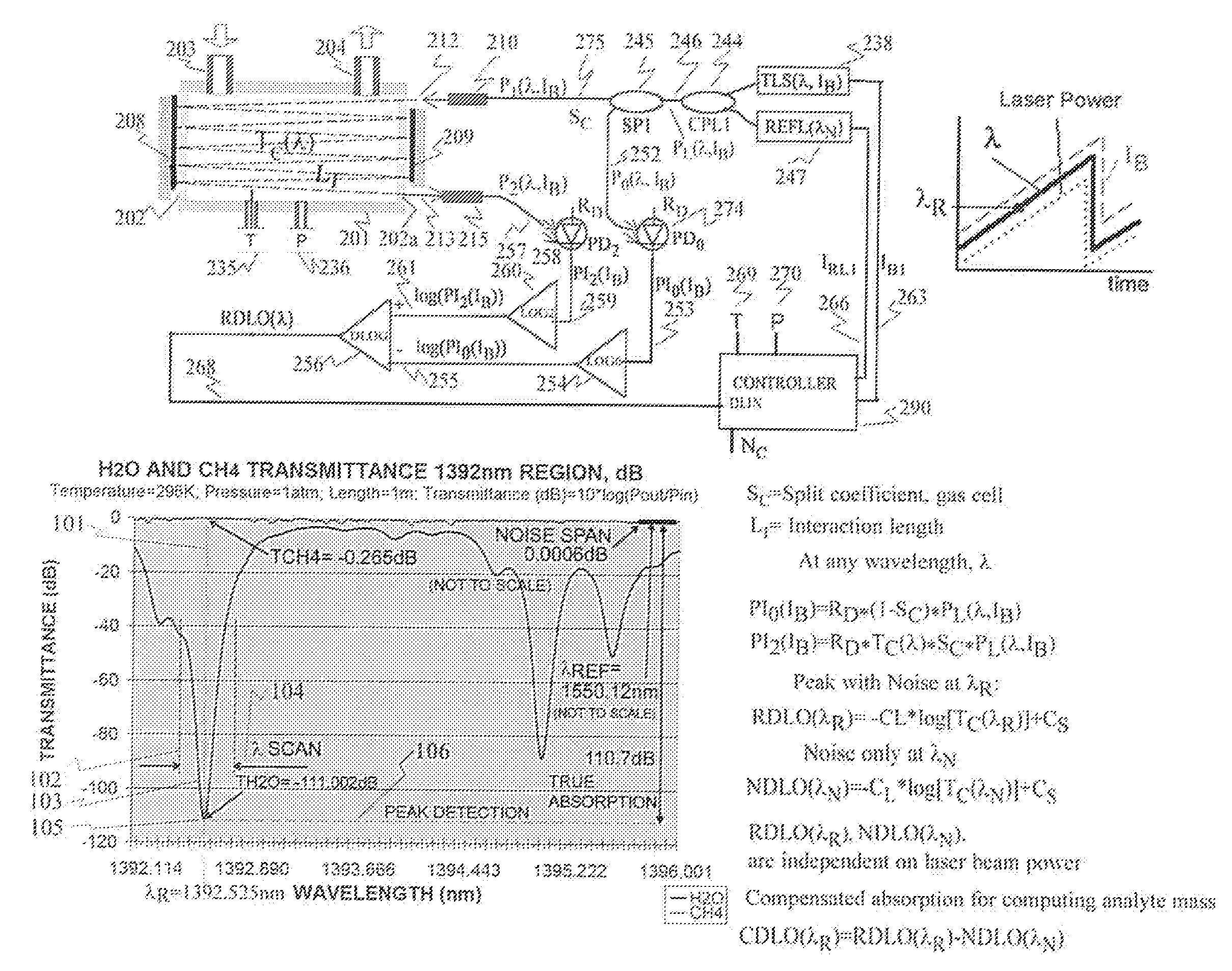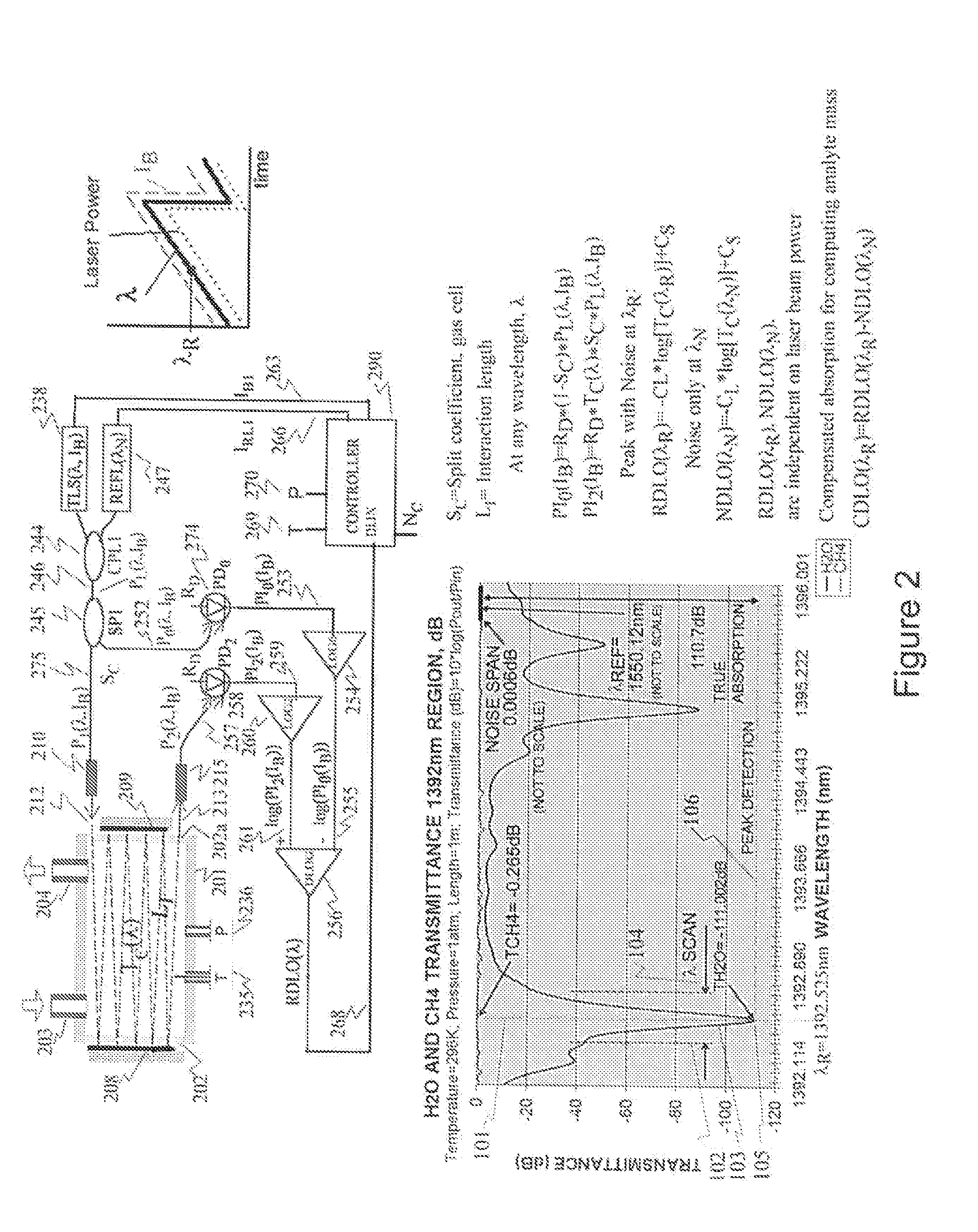Analytes monitoring by differential swept wavelength absorption spectroscopy methods
a wavelength absorption spectroscopy and wavelength absorption spectroscopy technology, applied in the direction of material analysis, instruments, spectral investigation, etc., can solve the problems of inability to measure the baseline, inability to minimize the influence of inherent laser power changes during wavelength tuning by direct measurement, and inability to separate absorption lines, etc., to achieve the effect of increasing the sensitivity of the instrumen
- Summary
- Abstract
- Description
- Claims
- Application Information
AI Technical Summary
Benefits of technology
Problems solved by technology
Method used
Image
Examples
Embodiment Construction
[0063]The present invention relates to a method, apparatus and system for measuring the content of either one or more gas analytes that may be part of a gas mixture. The present invention applies a spectroscopic method that utilizes an extremely narrow linewidth laser beam that is absorbed when its wavelength is swept across the interval containing the absorption line of the analyte. The method, apparatus and system of the present invention is applicable to any analyte in gas phase that is part of a gas mixture, or to any analyte in a plasma phase, as well as analytes in other environments.
[0064]The present invention provides a method, apparatus and system operable to achieve high sensitivity measurement of the mass of an analyte within a gas mixture, such measurement being provided to a user of the method, apparatus and / or system as a delimited volume defined by a gas sampling cell. Embodiments of the present invention achieve this measurement by undertaking several steps. The pres...
PUM
| Property | Measurement | Unit |
|---|---|---|
| incidence angle | aaaaa | aaaaa |
| wavelength accuracy | aaaaa | aaaaa |
| temperature accuracy | aaaaa | aaaaa |
Abstract
Description
Claims
Application Information
 Login to View More
Login to View More - R&D
- Intellectual Property
- Life Sciences
- Materials
- Tech Scout
- Unparalleled Data Quality
- Higher Quality Content
- 60% Fewer Hallucinations
Browse by: Latest US Patents, China's latest patents, Technical Efficacy Thesaurus, Application Domain, Technology Topic, Popular Technical Reports.
© 2025 PatSnap. All rights reserved.Legal|Privacy policy|Modern Slavery Act Transparency Statement|Sitemap|About US| Contact US: help@patsnap.com



